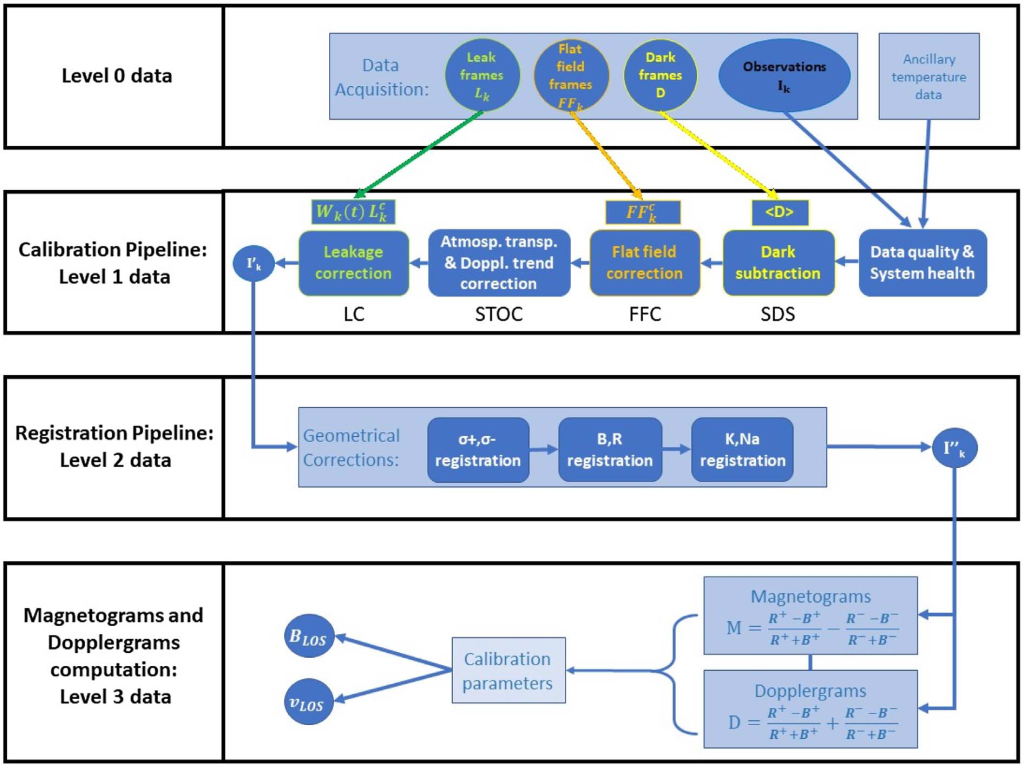Papers from SWICo members
Roberta Forte, Francesco Berrilli, Daniele Calchetti, Dario Del Moro, Bernhard Fleck, Cynthia Giebink, William Giebink, Luca Giovannelli, Stuart Mark Jefferies, Allister Knox, Maria Magrì, Neil Murphy, Garry Nitta, Maurizio Oliviero, Ermanno Pietropaolo, Wayne Rodgers, Stefano Scardigli, Giorgio Viavattene
The synoptic telescopes based on Magneto Optical Filters (MOF) using different lines are capable of measuring the line-of-sight Doppler velocity and magnetic field over the full solar disk at different ranges of height in the Sun’s photosphere and low chromosphere. Instruments like the MOTH (Magneto-Optical filters at Two Heights), using a dual-channel based on MOFs operating at 589.0 nm (Na D2 line) and 769.9 nm (K D1 line), the VAMOS instrument (Velocity And Magnetic Observations of the Sun), operating at 769.9 nm (K D1 line), and the future TSST (Tor Vergata Synoptic Solar Telescope), using a dual-channel telescope operating at 656.28 nm (H-alpha line) and at 769.9 nm (K D1 line), allow to face both aspects, the scientific and the operative related to Space Weather applications.

The MOTH, VAMOS and TSST data enable a wide variety of studies of the Sun, from seismic probing of the solar interior (sound speed, rotation, details of the tachocline, sub-surface structure of active regions), to the dynamics and magnetic evolution of the lower part of the solar atmosphere (heating of the solar atmosphere, identification of the signatures of solar eruptive events, atmospheric gravity waves, etc.), to the 3D reconstruction of the solar atmosphere and flare locations. However, the use of MOF filters requires special care in calibrating the data for scientific or operational use. This work presents a systematic pipeline that derives from the decennial use of MOF’s technology. More in detail, the pipeline is based on data reduction procedures tested and validated on MOTH data acquired at Mees Solar Observatory of the University of Hawaii Haleakala Observatories and at South Pole Solar Observatory (SPSO), at the Amundsen-Scott South Pole Station in Antarctica, during Antarctica Summer Campaign 2016/17.
Publication: Forte R., Berrilli F., Calchetti D., Del Moro D., Fleck B., Giebink C., Giebink W., et al., 2020, JSWSC, 10, 63. doi:10.1051/swsc/2020065. https://www.swsc-journal.org/articles/swsc/full_html/2020/01/swsc200064/swsc200064.html
